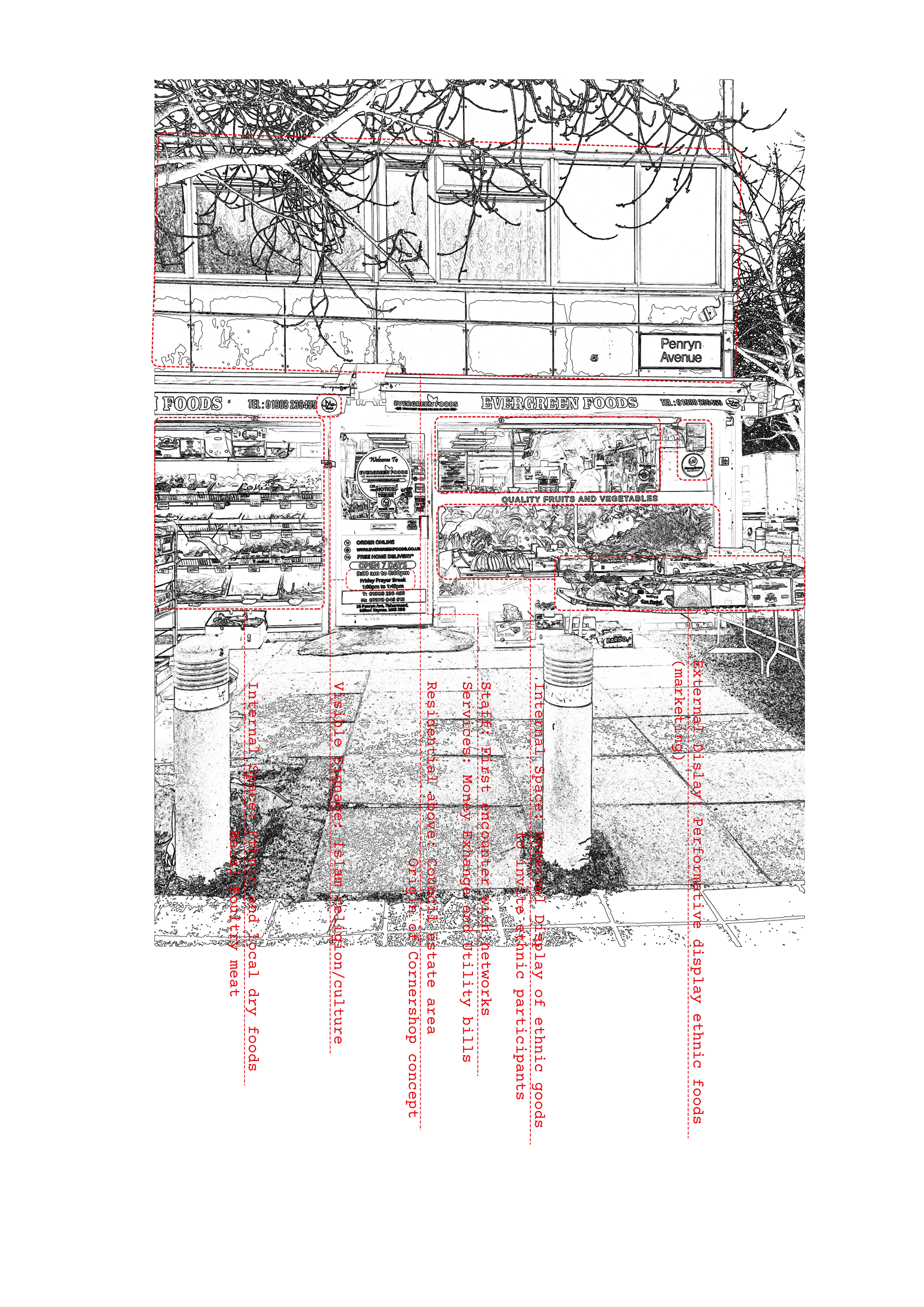Recognising the value of forms of Ethnic Mixed-Use urban stores as infrastructures of navigation through participation, revealing how they facilitate the social and cultural mobility of ethnic migrants in their re(settlement) within new UK towns.
ABSTRACT
Recognising the value of forms of Ethnic Mixed-Use urban stores as infrastructures of navigation through participation, revealing how they facilitate the social and cultural mobility of ethnic migrants in their re(settlement) within new UK towns.
The current mass migration trends have led to a significant rise in the movement of people globally and within the UK. Large cities such as London and Birmingham are becoming more densely populated which has made new UK towns more appealing to families and young professionals. These are cities with high BAME populations with people from various African, Caribbean, South Asian and Middle Eastern cultural backgrounds. However, the cultural composition of new towns do not appear to reflect this rapid demographic growth. For example, Milton Keynes proximity to densely populated cities has seen an exponential BAME demographic growth from 9% in 2011 to 26% in 2016. The towns Future Commissions and MK2050 Growth Agenda recognises these figures and has ambitions to improve the towns cultural visibility to establish a progressive town that reflects all its inhabitants. Thus, the paper will question, could the active participation with ethnic migrant spaces reveal an emerging creative network that challenges the architectural discourse’s understanding of what culturally inclusive infrastructures look like today? Observations are done though personal participation, unveiling a multi-scalar understanding of the spaces relationships to the town through politics of the terrain, and to their everyday engaging participants as spaces that provide escapism within the infrastructures. The emerging patterns of ethnic mixed-use urban stores may vary slightly across UK host towns, but their fundamental role in how they facilitating social and cultural mobility for marginalised groups of people will be of key interest in this paper.
PARTICIPATORY RESERARCH: Participant 1
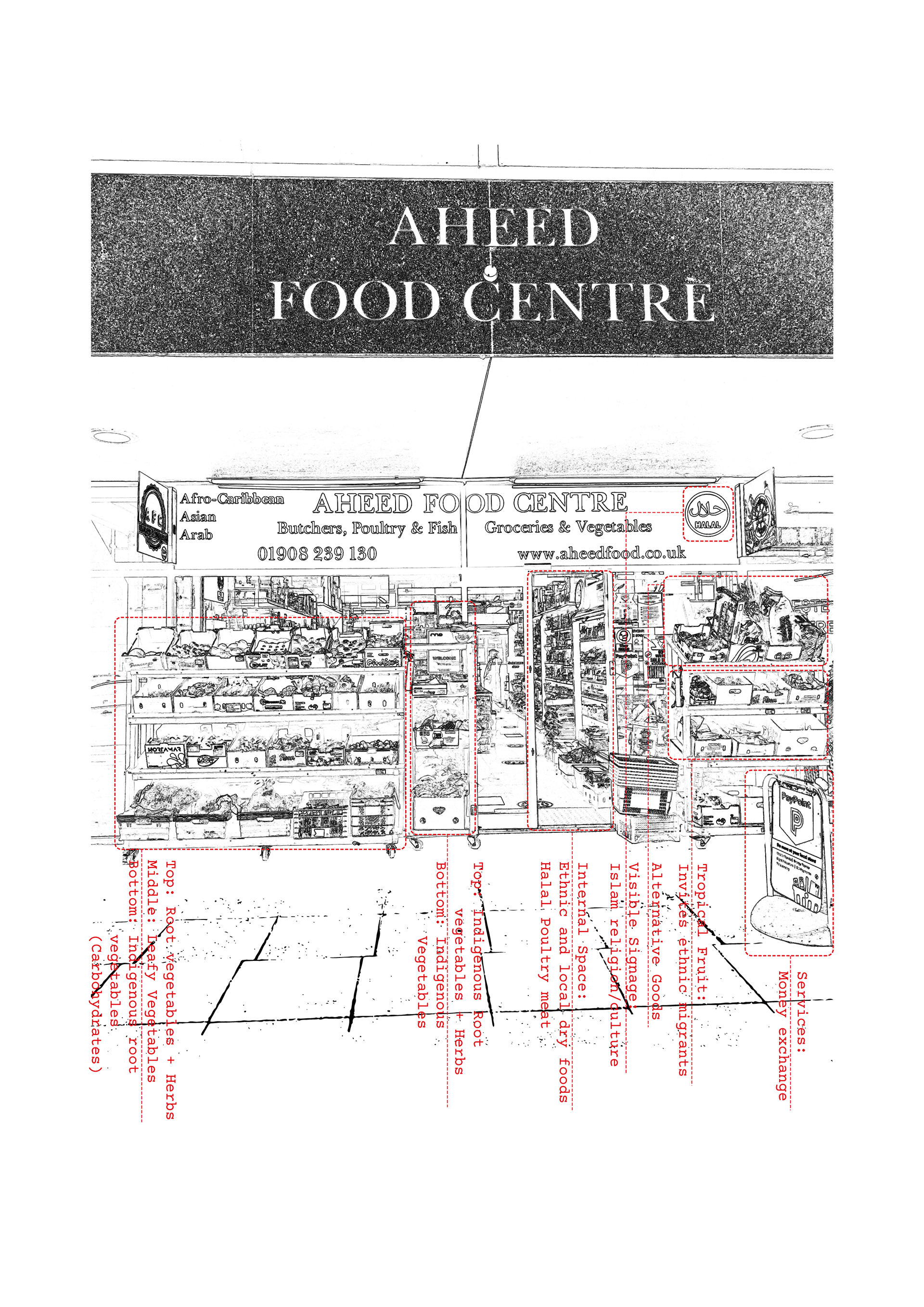
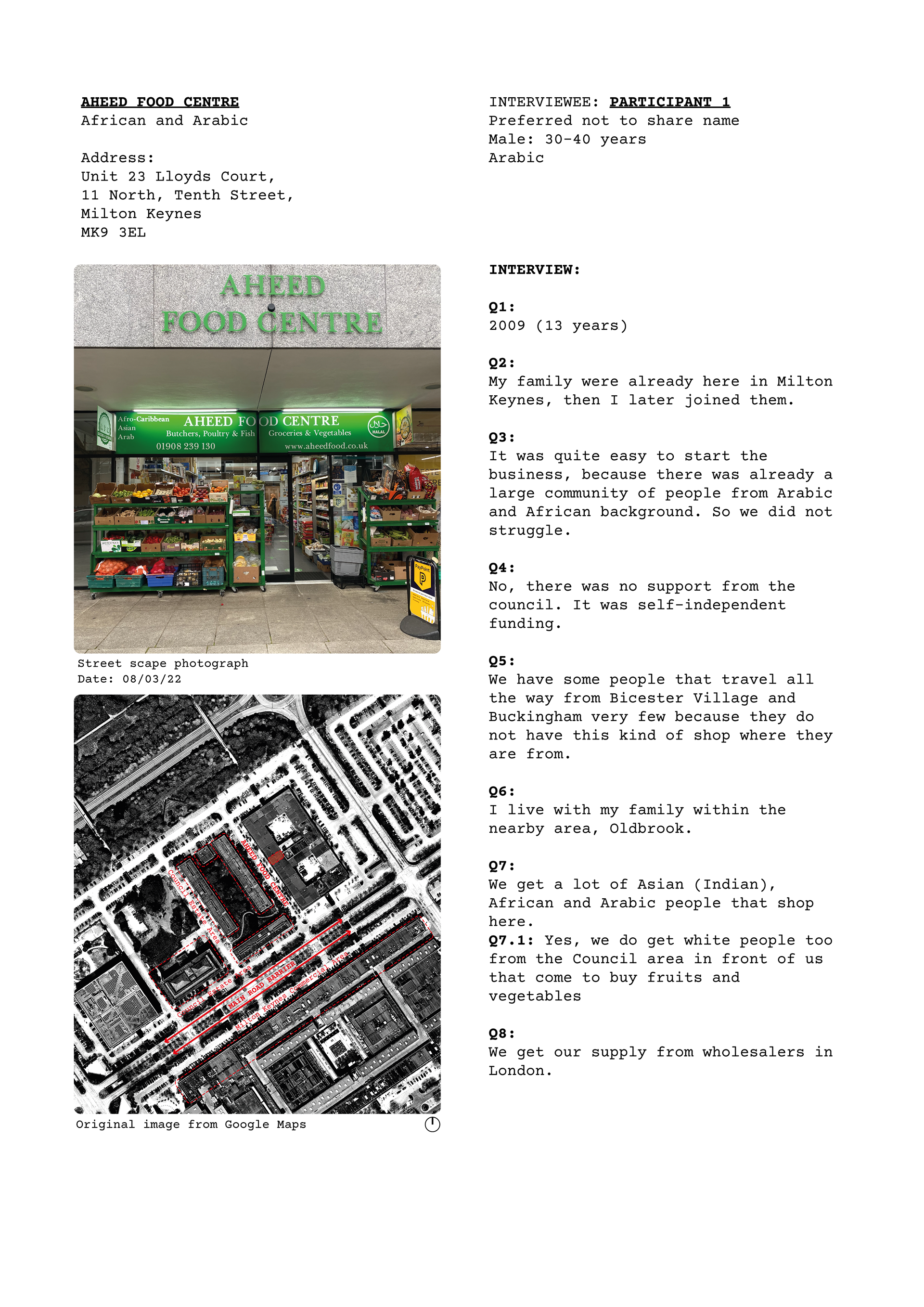
PARTICIPATORY RESERARCH: Participant 2
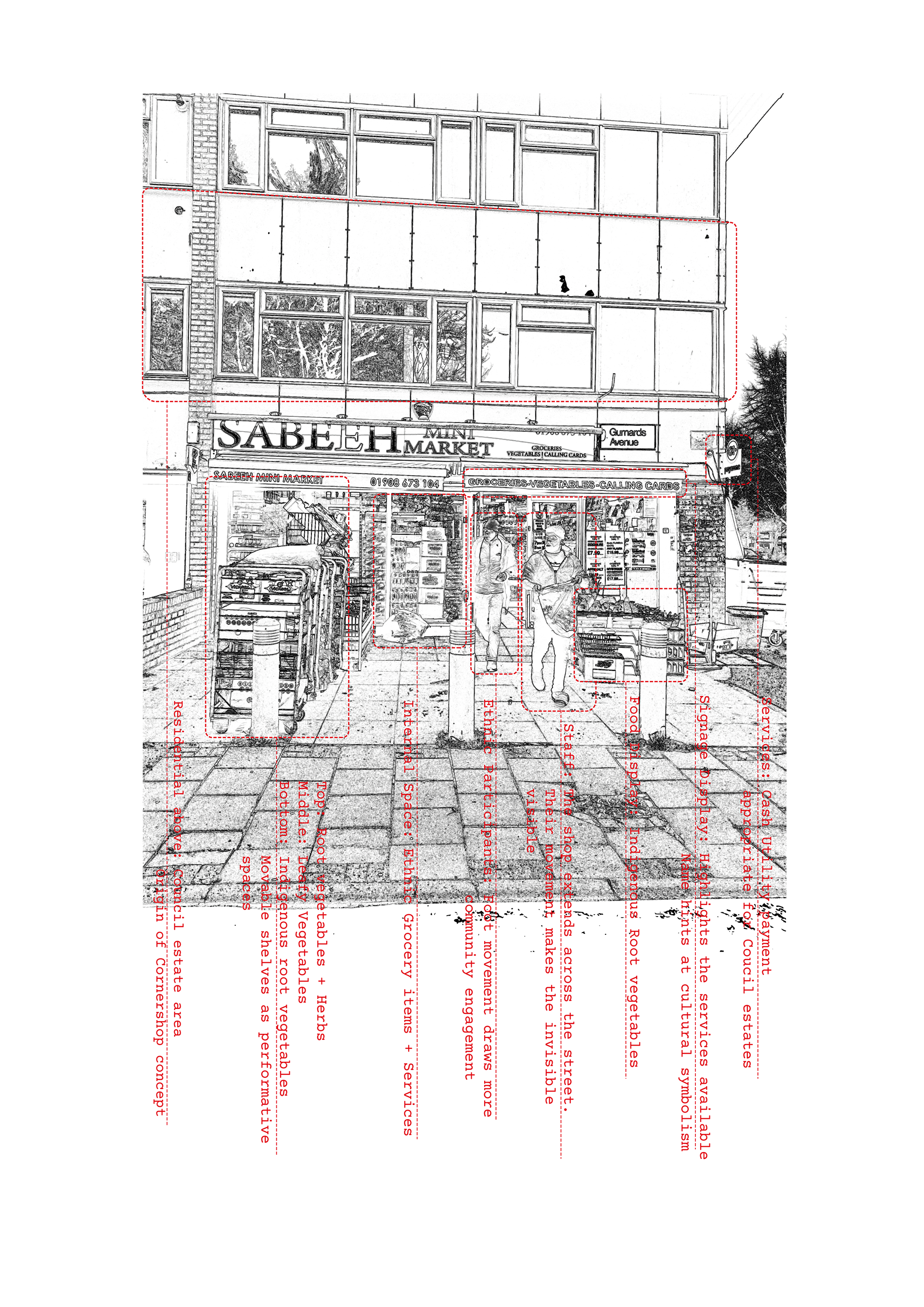
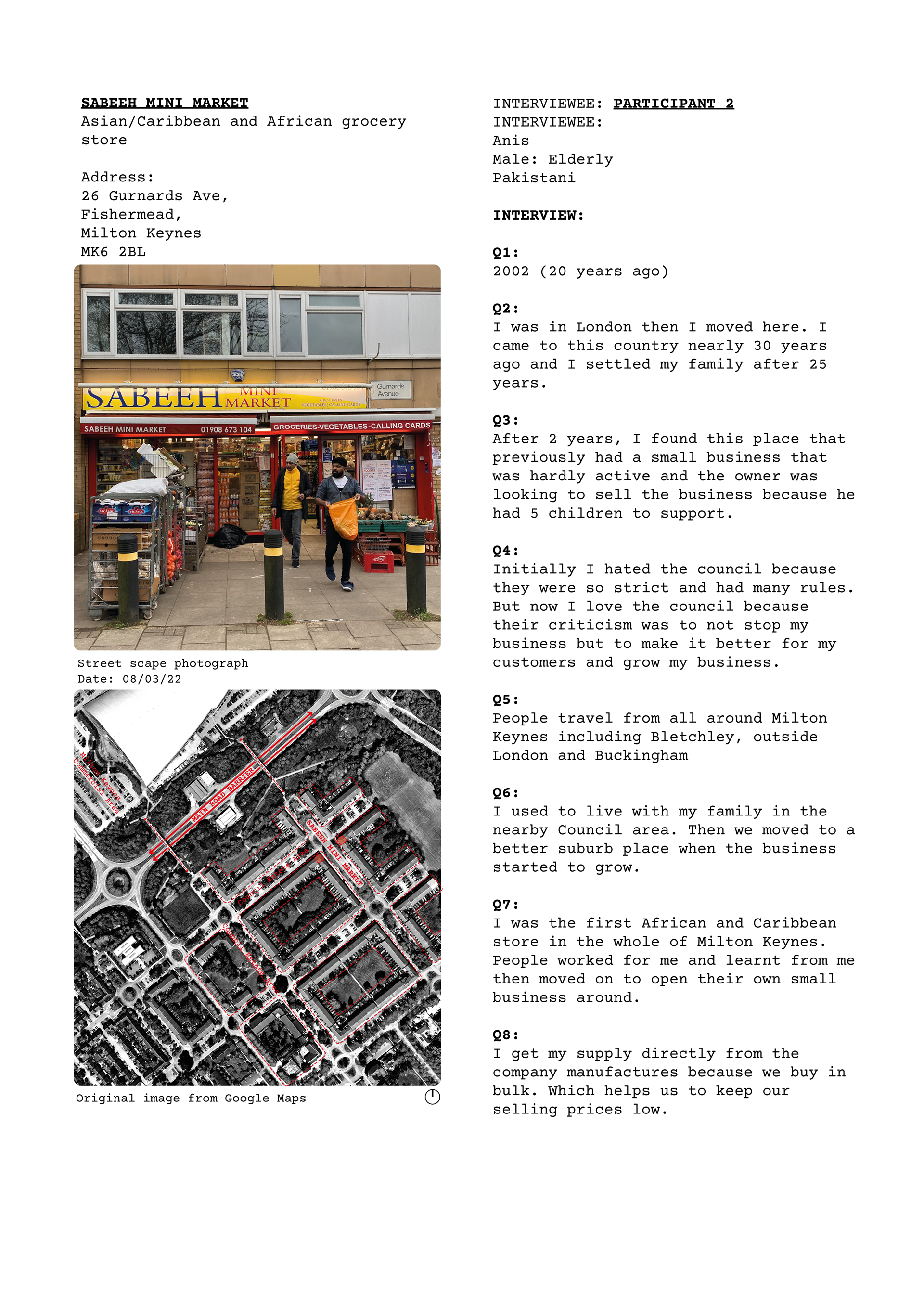
PARTICIPATORY RESERARCH: Participant 3
